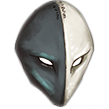Once you have an idea of the scope and the challenges in your adventure, the next step is to map out your adventure location, whether it’s an underground dungeon, a desert ruin, or an undersea coral forest.
If you’re worried that you don’t have the kind of artistic mastery to create a map, don’t be! Fundamentally, your maps should serve your purposes, framing the flow of action and story in a way that allows you to track the campaign’s action and possibilities. No one expects you to create stunning maps that look as professional as those in published adventures. Just follow some best practices to make your maps both interesting and clear. So, grab the following supplies and let’s get started.
- Sheets of graph paper
- Scratch paper
- A pencil, preferably with H or 3H lead to leave a soft mark that’s easy to erase
- An eraser
- Ink pens (optional)
- Ruler and compass (optional)
In all stages of mapmaking, don’t be frustrated by missteps. You can always fix them later—the eraser is your friend! Drawing or erasing too much can weaken the paper, but you can always throw out a draft and start again. Remind yourself that this doesn’t need to be the most exquisite piece of art ever made—all it needs to be is a tool for you to keep your story straight.
Begin by making a list of the features your adventure site should contain—from geographic features to the types of rooms in a building to the monsters and traps the PC will face—and deciding the map’s scale and orientation. The scale, orientation, and a key for any symbols you use to indicate features will go in the map’s legend.
The scale for your adventure maps is usually the easiest to decide. If the map is meant to be usable for combat on a grid, where 1 inch equals 5 feet, you can assume each square of your graph paper equals 5 feet. If you are mapping a larger area, you could use each square to represent 10 feet or even more.
For the orientation, draw an arrow toward the north, write an “N” above the arrow’s point, and you’re done. The key of the various details your map depicts is less predictable. Once you’ve decided what features your map should include—such as monsters, secret doors, and traps for a dungeon, or settlements and ruins for a regional map—think of a symbol to represent each feature on the map. You can also use the symbols in the sample map.
Now that you have your legend, it’s time to start the map. Grab a pencil and begin sketching your adventure site.
If you’re drawing a dungeon complex, start by detailing the corridors and rooms. If you’re creating an outdoor area, begin with any bodies of water, rivers, and topography. No matter what you are drawing, do so with soft lines so you can easily erase—you might make mistakes, or you might have better ideas later in the process. As your map starts to take shape, start populating it with features matching the symbols you’ve designated in your map key.
Try not to overcomplicate your maps. Keeping your map as simple as possible will make sure important details stand out and aids in the map’s legibility.
When sketching your maps—especially when drawing areas of wilderness or buildings—pull inspiration from the real world. An internet search will turn up reference images that can help when you’re deciding the placement of trees and shapes of canyons and streams, or when you’re replicating ancient, medieval, renaissance, or fantasy architecture. Basing your terrain and buildings on these references will help your creation seem more natural and believable.
When you draw dungeons and similar adventure sites, remember the size of the creatures that live in your complex, and give them enough room to live and move around. In other words, make sure the ancient black dragon fits through the entrance to its lair! Second, avoid empty rooms, and don’t put rooms in just to have them. Each room should have a purpose. Maybe it’s an abandoned purpose, but each time you create a chamber, ask yourself, “Why was this room built?” Lastly, avoid symmetrical or just plain dull structures. Part of the fun of exploring is being surprised by what you find, and needless symmetry and repetitive layouts can ruin that surprise.
The next step is to number the encounter areas. You can then use that numbering system in your encounter notes. If you are designing multiple sites, or many levels of a massive dungeon, consider adding a letter designation before your numbering. The first area of your first site can be A1, while the first area of your next site can be B1, and so on.
With your map sketched and keyed, you can solidify your sketches with either darker pencil strokes or ink. This allows you to preserve your map so you can rerun the adventure or reuse the map for a different adventure. If you’re feeling artistically inspired, you can color your map with colored pencils, marker, or paint.
 Licenses
Sources
Licenses
Sources
 Contact Us
Contributors
Support the Archives
Maximize Menu
Contact Us
Contributors
Support the Archives
Maximize Menu
 Licenses
Sources
Licenses
Sources
 Contact Us
Contributors
Support the Archives
Contact Us
Contributors
Support the Archives









